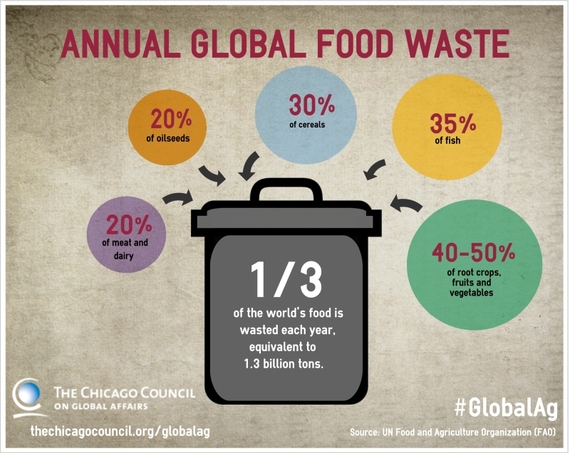As a graduate of New York’s French Culinary Institute and former chef, I’m obsessed with great food. I can remember the first time I tasted chocolate mousse, pine nuts, and avocados. Years, even decades later, I can recall the succulence of fresh prawns on the Pacific coast of Guatemala, and the fiery savoriness of street food in India. All these moments were shared with family or friends, which made them especially memorable. Breaking bread with others is part of what it means to be human, and the act is wrapped up in emotional well-being, especially love.
If you cooked at home you could feed four people a hearty, healthy meal at half the price.
Some of my most cherished moments include my mom greeting me on Christmas morning with oven-warm chocolate-chip cookies, or learning at her elbow how to make a proper chicken curry, or watching contentment spread across my partner Michelle Fawcett’s face when I whip up her nostalgia food in the form of salmon teriyaki and rice.
But it’s increasingly uncommon for Americans to eat meals home-cooked from scratch. Instead, 19 percent of us eat fast food several times a week and fully 80 percent eat it once a month or more. The food we eat at home is mostly a matter of heating up food from a factory.

And that’s true even though 76 percent of us say that fast food is unhealthy—testimony to the effect of writers like Michael Pollan, Marion Nestle, Eric Schlosser, and Frances Moore Lappé, who have shown how industrial food is laced with toxins, designed to be as addictive as crack, and chock-full of worker exploitation, animal cruelty, and climate change.
So why do we keep eating junk? The conventional wisdom is that we’re all pressed for time and money, and industrial food is quick and cheap. At least when it comes to cost, that’s not necessarily true. Feeding a family of four at McDonald’s can set you back $25. If you went shopping and cooked at home you could feed four people a hearty, healthy meal at half the price.
And time is not really a problem. Americans on average watch television five hours a day, plus surf the web, play with smart phones, and update Facebook. And if you eat out, not only is it much more expensive than cooking at home, it’s just as time-consuming.
The real issue is pleasure. The food industry spends billions a year on gleaming research centers staffed with white-coated scientists who concoct foods that electrify our brains like Times Square on New Year’s Eve. Their tricks range from the simple—add bacon and cheese to everything—to the sophisticated: U.S. Army scientists discovered years ago that we prefer flavor medleys, which is why colas, which are symphonies for the mouth, far outsell one-note orange sodas. Food science tells corporations precisely how to manipulate our inborn fondness for fat, salt and sugar, smoky flavors, and umami, the savoriness found in foods like mushrooms, aged cheese, meat, and shellfish. If food companies can convince us they’re the only practical source of the pleasures and sensuality of the table, then we’ll be hooked on their products.
The path to modern food
Now, the idea that everyone can eat for pleasure is relatively new. In the past eating for pleasure was the province of the upper crust, who equated it with refined French food. The rest of us had simple country fare, but we worked hard for it and shared it.
The Great Depression and World War II provoked a sea change. Starting in the 1930s, farmers got subsidies and price supports, which boosted production and lowered consumer prices.
Wartime explosives chemistry led to synthetic fertilizers and pesticides and quickly made their way into the food chain. Americans welcomed the postwar cornucopia of cheap food. The high-tech field rations that fed the GIs were reengineered by food scientists and hyped by Madison Avenue as the liberators of housewives from scullery work.

Taste-testing, with the author in the background. Photo by Paul Dunn for YES! Magazine.
The price of that freedom was food stripped of flavor and nutrients. By the '60s, low cost and convenience weren’t enough. This produced a new food revolution heavily influenced by Julia Child’s democratization of sophisticated food in her PBS show, The French Chef, and Alice Waters of Berkeley’s Chez Panisse championing local, seasonal food sourced directly from farmers. At the same time, Rachel Carson warned in Silent Spring of the perils of industrial science. The contours of our current food culture took form during the '70s: the local, organic and artisanal food movements arose, but at the same time fast-food outlets more than quadrupled in number.
Real food, real simple
For those who care about food, it’s a dilemma: We want fare that’s good for us and good for the planet, but we also want bliss on a plate. The good news is we can beat the junk-food engineers at their own game. With a bit of time, fresh ingredients, and a simple tool kit, we can make food that’s tastier and cheaper than commercial food. Homecooked food is also associated with better health, if for no other reason than that you eat 50 percent more calories and fat when you eat out. The foods we cook at home are more likely to include dishes largely absent from restaurant menus, such as fresh vegetables, salads not buried in meat and cheese, grains, beans, and fruit, which have more nutrients and fewer calories than engineered food. Plus, through the acts of creating and sharing, the pleasure we derive is far greater than bellying up for another round of “unlimited soup, salad and breadsticks” at Olive Garden.
If we saw cooking as rewarding, as a craft, as a way to bring people together, then it would be less of a chore. The first step is to devote care and attention to it. That doesn’t mean spending all night in the kitchen. In fact, the simplest food is often the best.
Next, the responsibility has to be shared. American men pitch in with housework more than ever, but they spend only 17 minutes a day on food prep and cleanup as opposed to 45 minutes for women. Cooking and cleaning for someone close to you forges bonds based on kindness, compassion, and love.
In the late '90s I interned at New York’s Savoy restaurant, which brought to New York the locavore aesthetic in fine dining the way Waters did in California a generation earlier. Under chef-owner Peter Hoffman I learned the power of simplicity. A few basic principles make cooking much easier.
First, nearly all cuisines are about concentrating flavor. Most start with a base of ingredients that create deep flavor. In French cuisine, the mix is carrot, celery, and onion; in Latin America it’s sweet peppers, onions, garlic, tomatoes, and cilantro; in North India it’s usually ginger, onions, tomatoes, and freshground spices.
Cooking and cleaning for a loved one forges bonds based on kindness, compassion, and love.
To transform quality ingredients into delicious home-cooked food, all you need is sea salt and fresh-ground black pepper; extra-virgin olive oil and butter; fresh herbs; onions and their relatives; liquid like white wine, chicken stock, and citrus; a little smoked meat; and mushrooms, fresh and dried. Those basics cost about $20, and you can add to the pantry as you go—beans, grains, spices, chile peppers, oils, vinegars, nuts, cheeses, eggs, pickles—but learning the basics opens up a world of possibilities.
Much of cuisine is about balance. So another way to beat the junk-food dealers at their own game is to use these elements of flavor judiciously instead of excessively. Combining those flavors with fresh, seasonal ingredients puts you far ahead of processed food, which has been dead for months or even years. Farmers markets tend to have exceptional ingredients, even more than pricey gourmet supermarkets, but a good greengrocer or ethnic market can be a treasure mine of inexpensive quality fruits and vegetables.
Road test
Last summer I decided to put these concepts to the test. I was planning to take a month to drive from New York City to Portland, Ore., stopping and spending time with friends along the way. It was an opportunity to visit different farmers markets, pick from their abundant offerings, and cook it all up as the weeks ticked off and the harvest progressed.
My first stop was near Ithaca, N.Y., to visit Michael Burns and Kelly Dietz, who help run the Finger Lakes Permaculture Institute at their 38-acre homestead. Their pastured chickens spend their days outside, scratching the ground for seeds, insects, and plants and lay eggs with marvelous sunset orange yolks. Scrambled with butter, adding only salt and minced chives, they’re incomparable to any other eggs I’ve ever had. From the nearby Farmer Ground Flour, I purchased polenta ground from heirloom corn that I cooked with butter, extra-virgin olive oil, and grated Parmigiano-Reggiano. Served with sautéed mushrooms and squash from the garden it was a perfect meal.
Next was a farmers market dinner in Chicago at the home of Peter Holderness and Jinah Kim. I roasted a pastured chicken from TJ’s Free Range Poultry with slices of lemon and garlic, made brioche bread and served it toasted with gorgonzola and fig jam, assembled a kale salad, pan-roasted forest mushrooms with thyme, shallots, butter, and white wine and tossed them with handmade pasta. Dessert was a fresh peach-raspberry cobbler dusted with sugar, fresh-ground cinnamon and a crumble topping.

Photo by Paul Dunn for YES! Magazine.
Everything was purchased and cooked the same day. I was striving for simplicity, apart from one complex course: a carefully constructed tower of slices of oven-dried and fresh heirloom tomatoes over roasted poblano chiles draped on a chunky black-bean mash in cilantro “water” made by pureeing the herb and straining it through cheesecloth, and garnished with avocados, tomatillos, and black-eyed peas. The recipe was from Chicago’s Charlie Trotter, and a demonstration that vegan food can be elegant and sublime. That night carnivores and herbivores alike declared this dish to be their favorite.
Finally, the Portland dinner in August showcased the outrageous bounty of the Pacific Northwest. I shopped at the Saturday market at Portland State University, which has more than 150 vendors. Unlike many farmers markets, there are few prepared food stalls and no crafts, so there is a tremendous selection of raw and artisanal foods to choose from.
Truth be told, I went wild. Being able to talk to vendors about their products, how they are produced, and ideas for preparation unleashed my imagination.
Simon Sampson, who’s been running a boat on the Yakima and Columbia rivers since 1976, sold me a chunk of salmon and salmon roe “caught the night before.” Erik Olson, manager of Pono Farm, described the Berkshire/Red Wattle-cross hogs he raises, showing off a ruby-red tenderloin. Nearby, Liz Alviz of the two-year-old Portland Creamery suggested I serve peaches with her goat cheese, drizzled with goat-milk caramel. It sounded like an ideal companion to pork.
I spent hours talking to vendors, sampling wares, gathering ideas, and choosing the best ingredients. I picked up a bushel of fruit and produce, as well as blue cheese and butter from Jacobs Creamery, a 5-year-old business run by law-school dropout Lisa Jacobs.
Dinner was in the garden of the home of Anne and Chris Prescott. I met them through Tom Kiessling, a friend from New York who happens to be a food scientist. Juan Ordoñez, a buddy from college, joined us.
Michelle and I spent about six hours making a feast. There was cubed watermelon and heirloom tomatoes with crumbled feta and mint; potato latkes crowned with salmon caviar, sour cream, and chives; kale massaged with salt and tossed with green apples, blue cheese, red onions, currants, and sunflower seeds; multicolored carrots roasted with cardamom; mushrooms sautéed with garlic, shallots, olive oil, and thyme and finished with a little chicken stock, mushroom powder, and butter; Brussels sprouts roasted with bacon; a berry-peach cobbler with crème Chantilly.
The salmon needed only a brief sauté; a beet-yogurt salad cut its richness. Silky cod and poached clams melded with potatoes and mushrooms like a pine forest rolling down to the sea. The clarity of the pork resonated with a Chinese five-spice rub in a symphony with the peaches, goat cheese, and caramel. Tartly sweet pie, mounded with five pounds of Granny Smith apples, formed a straw-colored hill of tender flaky crust.
“I’ll remember this dinner for the rest of my life.”
In all, we pulled off a grandiose, 11-course meal in one day for about $25 a head with just the tool kit of basic ingredients, a few added herbs and spices, and no fancy kitchen tools. As the evening wound down, Chris, slumped in a chair, said, “I’ll remember this dinner for the rest of my life.”
To be fair, no one can cook, or would want to eat, like this regularly. There were nearly three separate meals in one. But it would be easy for a couple of people to whip up a few of these dishes in an hour of prep work for less than half the cost. I limited expenses to what a meal might cost at a popular chain like Applebee’s, although you wouldn’t get 11 courses of fresh-off-the-farm food there.
Changing food culture
It is true that artisanal products cost more than industrial foods. That’s because they don’t dump costs on the rest of society like agribusiness does through pesticides, animal waste, and ill health—and they don’t get the subsidies that make industrial food so cheap.
There are some policy moves in the right direction. Kinga, a guest at the Chicago dinner, had gone to the farmers market earlier that same day. There, her food stamps were doubled, as part of a program in Illinois and other states to provide low-income households with more access to healthy food. Cutting the price in half makes local food from small farmers competitive with industrial food.
Farmers markets are spreading as well—there are more than 8,100 nationwide, nearly triple the number in 2000. In 2008, the most recent year for which numbers are available, 107,000 farms sold $4.8 billion worth of products, with less than 20 percent of sales taking place at farmers markets. But the market for local food is dominated by 5,300 large producers that account for 70 percent of all local food sales and outsell small vendors by a factor of 98 to one.
Eric Holt-Giménez, executive director of the Institute for Food and Development Policy, says that we don’t pay for the “real cost” of food, and to do so, “We need a social wage, need a living wage.” The next phase of the food movement has to be changing “the institutions and the rules of the food system by building a strong food movement in order to force these reforms onto the government,” Holt-Giménez says. Organizing for social solutions like new farmers markets, food co-ops, and farm-to-school programs will allow us to think bigger and tackle national solutions—like using our tax dollars to subsidize small producers and community-supported agriculture instead of funding industrial corn and feedlots crammed with 50,000 cattle.
The best way to build a popular movement is not by being scolds, but by being fun and exciting.
Ultimately food is about the bonds we create. In Chicago, Kinga declared she hated mushrooms, but her distaste was no match for the earthy-meaty aroma of frying creminis and portabellas. When pasta buried in mushrooms hit the table, she dug in and exclaimed that not only did she like them, but she couldn’t wait to tell her family she ate mushrooms willingly. In the Finger Lakes, Kelly and Michael were intrigued at how I slowly scrambled eggs over low heat with the butter thrown in cold. “Wow,” was their reaction upon tasting it. While they introduced me to pastured eggs, I showed them how a simple technique could coax out the eggs’ flavor with ingredients readily at hand. In both instances we created a shared experience that in the future we’ll talk and laugh and think about.
It’s why I believe good food should be a right. Eating great-tasting food regularly makes you realize processed food hits our pocketbooks hard but shortchanges us on pleasure. The best way to build a popular movement is not by being scolds, but by being fun and exciting. And we can do that by starting a food revolution that meets people where they eat.


















